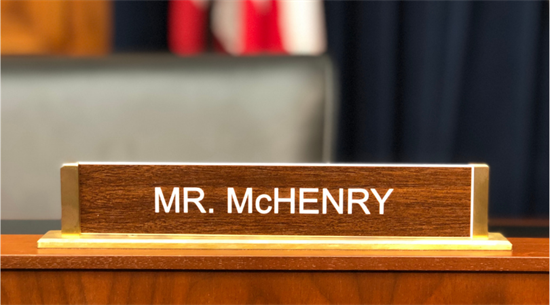U.S. House Lawmakers Work on 5 Yr. Extension of National Flood Insurance ProgramBy Kevin Frey, Spectrum News
Washington,
June 14, 2019
WASHINGTON, D.C. -- Lawmakers on Capitol Hill are working on a five-year extension to the National Flood Insurance Program (NFIP).
Earlier this week, a compromise plan advanced out of a House committee with unanimous, biptartisan support - the first step on Capitol Hill for the legislation. “This is the most optimistic I’ve been about a long-term reauthorization of this program in nearly a decade,” said Rep. Patrick McHenry, R-10th District, who is among those spearheading the plan. For years now, the program aimed at keeping people afloat after a flood has been on unstable footing. In a roughly three year span, Congress has approved twelve piecemeal extensions, unable to reach a long-term agreement. There are currently more than 141,000 NFIP policies in North Carolina, according to a FEMA spokesperson. The extension plan includes several changes to NFIP, according to a summary released by Democrats on the House Financial Services Committee. It increases funding to modernize flood maps. It creates a pilot program to help low-income families afford coverage. For those living in high-risk properties, it expands opportunities for buyouts. It also devotes greater attention to mitigation. “If you have repetitive flooding, rather than keeping the money flowing to keep rebuilding houses, why not put a rock wall up? Why not have a one-time $5,000 expense rather than a regular $10,000 dollar expense?” McHenry said. McHenry notes it also includes a provision allowing policyholders who leave the NFIP for a private insurer to return to the NFIP without penalty. The NFIP is $20 billion in debt as of September of last year. This plan will not wipe that away, and in committee some lawmakers did raise concern that it does not do enough to address deficit issues. It is for this reason that some outside groups say the expanded focus on preventing future damage is so key. “If you really want to reduce costs, you need to make sure those structures are not flooding in the first place, and this bill provides a lot of opportunity for mitigation options to help reduce flood risk, which should in turn help reduce the cost of the program,” said Joel Scata with the Natural Resources Defense Council. Scata described the plan as a step in the right direction. The legislation still awaits approval in the full House. It also has to be approved by the Senate. There, some lawmakers have already expressed concern that the bill does not do enough to keep prices affordable. The NFIP as it stands is set to lapse at the end of September if lawmakers do not act. |


